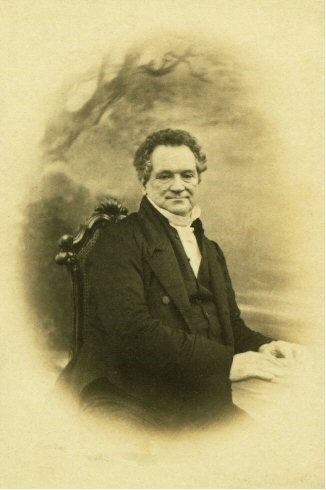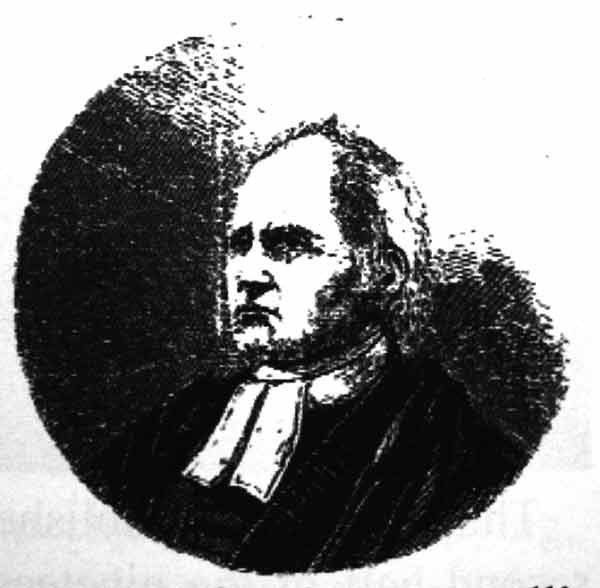- Screen Colours:
- Normal
- Black & Yellow
Little Waldingfield History Society was delighted to welcome Pip Wright, local historian, writer and master story-teller, back to the Parish Room to tell us the story of ‘The Suffolk Gipsy’,
an autobiography written by Heigham Steggall and published with the help of the Rev’d Richard Cobbold (of Ipswich brewery fame) some 150 years ago.
To set the scene, Pip told us that he had been so intrigued by the story, which he didn’t believe and which was no longer in print, that he decided to undertake his own research and rewrite the story, with some of the original words alongside his own. As he then said, surprisingly, most of it can be shown to be an accurate representation of a remarkable life.
I hope that I can do justice to this amazing story, which is available to purchase from Pip at http://www.pipwright.com/gipsy.htm

In 1854 John Heigham Steggall (JHS) visited Wortham rectory to meet Rev’d Richard Cobbold (RRC), of Ipswich brewery fame, and to ask for his assistance in publishing his autobiography. RRC agreed and edited the book, almost certainly romanticising it in the process; he also changed its name and ensured that the book cover just mentioned his name. RRC also got both JHS’s birth place and date wrong, but as Pip said, there were no birth certificates at the time, so this probably explains the error. The book was finally published in 1857.

Rev'd Richard Cobbold
JHS was born in May 1789 and privately baptized at Creeting St Mary. He was a grandson of the rector of Wyverstone, who died shortly after his baptism, whereupon his father moved them into the parsonage where John spent his childhood. At the age of seven he was sent to a private boarding school run by Mr Edmund Rogers in Walsham-le-Willows, about about five miles from his home. He hated the school, because Rogers terrorized the children with an extremely harsh regime where the rod and whip were liberally used, so he ran away home, to be immediately sent back again!
He remained at the school until the following June when he ran away again, in the early hours of the morning; not home, because he knew he would immediately be sent back, so he just walked away from both. After some time he was unsure what to do next, when a large dark skinned man yelled ‘Boy, what are you doing here’? It was Jonas Gibson, an educated man married into a gypsy family, who suggested that he came back to their (primitive) camp for breakfast, where JHS told his sorry tale. The kindly gypsies understood his situation and suggested that he stayed with them a while.

An early gypsy camp
To protect both JHS and themselves, John’s long hair was cut short; his fine clothes were removed for storage, being replaced by rags, so that he would look the part of a gypsy child. Jonas spotted that his voice was too refined to be that of a gypsy, so John was told to pretend to be deaf and dumb whenever they met anyone else - good advice because the camp was soon visited by the local constable and his deputy Mr fake. Being fooled by John’s appearance, they went away satisfied.
Pip advised that it is unknown how long JHS spent with the family, which may have been just a matter of weeks, but that he probably had a lot of fun as it was the height of summer. Whilst travelling around the family visited Norton, where the local gamekeeper knew the family and gave them a couple of rabbits, then the two men went off into the woods in search of something more. A little later, there was the sound of a gunshot, and shortly thereafter Jonas came running back saying that Tom Sealy had been shot and that the children needed to run off to get a doctor and a priest. All the children ran off except JHS, who Pip advised would not have understood the Romany this instruction would have been given in. Knowing that something was wrong, JHS asked if there was anything he could do to help; Jonas wasn’t too keen, because he knew the accident would take some explaining, before finally saying that JHS should go off in search of clean rags for bandages.
John went off to Norton Hall, arriving just as the squire was returning home. Looking like a gypsy child he received a whipping, but managed to explain that the keeper had been shot and that they needed some rags for bandages. The squire came down to the wood to see for himself, whilst also thinking something was wrong, because gypsy children generally kept quite whereas JHS was quite voluble and well spoken.
There were now many people in the woods and no one could really understand how the accident, if it was such, had actually happened. Jonas explained that Tom Sealy (TS) had expressed a desire to marry his daughter, who being quite young Jonas wasn’t happy about; seemingly TS then began remonstrating with his loaded gun, which somehow was dropped and went off. Not satisfied, the squire told Jonas that he and JHS would have to go before the local magistrate for him to decide the truth of the matter - at the court room in the Pykkerell Inn at Ixworth.
It seems that both Jonas and JHS spoke well, though of course John had not seen the accident so was repeating what Jonas had told him; however, there were two people present who had recently seen them both before - the constable and deputy Fake - who were not impressed. The magistrate was unsure what to do, enquiring ‘will the keeper live’? As this was unsure, he remanded both into custody at Bury - probably at Moyses Hall - where Jonas and the boy were separated, being able to meet up just once a week when exercising.
Some time later Jonas became very ill, and fearing that he was dying, asked to see JHS, when he apparently told him his life story. Jonas claimed that he was the son of a titled landowner in the south, who would have been married against his wishes when he had already fallen in love with his gypsy wife Mog, though Pip is unconvinced by this. Tom Sealy then recovers, to say that it really was an accident so both were sent home, from gaol, though sadly Jonas died soon after.
John is reconciled to his family and another school found, much more to his liking, in Botesdale. After completing his school studies he was articled to a surgeon practising in Bacton; this was a seven year apprenticeship and he soon became fed up with continually cleaning up after the surgeon, saying to an uncle that he was bored. The uncle being keen for him to go to sea, JHS was persuaded to take a berth on one of the uncle's whalers bound for the South Pacific Ocean, on a ship appropriately called Adventure, John becoming the ships surgeon. Now 18, John enjoyed his sea adventures, writing about the animals he had seen, but after completing the voyage, the ship returned to the Thames, and John wonders what to do next.
After spending several months at home he was offered a cadetship with the East India Company, bound for Madras in India. He was ill on the way to India but recovered to receive his commission as an ensign of the 15th Regiment of Native Infantry. III heath continued to afflict him so he was invalided home, but on the return journey took a large splinter in his thigh during an action with the French. He was honourably received at home, being a wounded soldier on full pay with a leave of absence for three years to decide his future. During this time he resigned from the army and began studies at Corpus Christi, Cambridge, being ordained as a deacon in June 1814, Diocese of Norwich, and as a priest the following year, even though he did not actually complete his studies - Pip advised there was a shortage of priests at the time!
JHS then married Sarah Weeding at Great Glemham in October 1815, but shortly after his father had a stroke and was forced to sell the living to pay for his care, rather than giving it to John. So John became a curate at Wyverstone, but because this didn’t pay well, he also set himself up as a surgeon in Rattlesden. Popular with his patients, this didn’t prove a good idea, because his cut price fees upset the other local surgeons; when a young girl had to have a leg amputated, he was blamed by them for providing the wrong diagnosis and effectively struck off - after 15 yearsʼ service to the local community!
Sometime later Lord Thurlow proposed that JHS and his wife should come and reside in the parish of Great Ashfield, where he would build them a house; it was an offer too good to decline, so John remained as a priest there for fifty years. His wife died in 1876 and in 1879 he married Elizabeth Syer, living until 1881 when he was died and was buried at Great Ashfield.
During his life JHS claimed to be a gipsy, a surgeon, a soldier, a sailor and finally a parish priest, mostly living in the villages of central Suffolk, but also travelling to India and the South Seas, as well as spending time in Bury jail. Throughout his life John always tried to show gipsies in a favourable light, because of the kindness they had showed him when young and in trouble, and once again Pip enthralled his audience and LWHS guests heard a quite fabulous and amazing tale.

John Heigham Steggall
Our next events will be at 7.30 in The Parish Room on:
22nd May: The History of Landguard Fort, Felixstowe by David Wood
First built nearly 400 years ago, the fort guards the Orwell navigable channel because Harwich Harbour was the best haven for large ships between the Thames & Humber.
19th June: Sudden Deaths in Early Nineteenth Century Suffolk by Geoffrey Robinson
Fireside hearths, pantries, village ponds and brewing rooms were dangerous places when death was never far away. Sudden deaths & their inquests were the lifeblood of columnists, whose reports fascinated readers with tales of misery and misfortune.
Both events are going to be great, and we very much look forward to welcoming guests both new and old to the Parish Room.
Andy Sheppard 21st April 2019